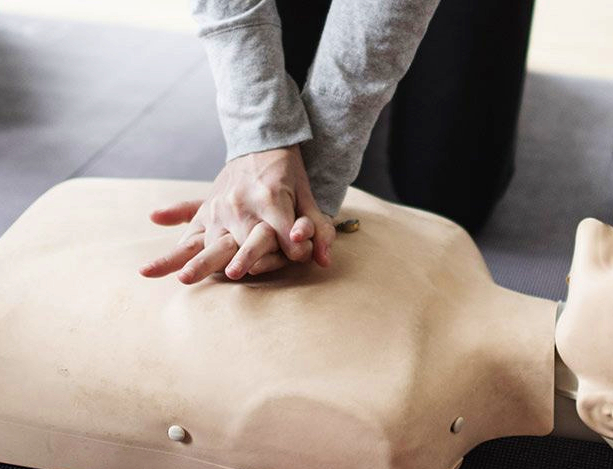How to Stay Safe in the Classroom During the COVID-19 Pandemic
It’s normal to be fearful during stressful conditions like the COVID-19 pandemic. The fear of exposure to COVID-19 is understandable given the potentially life threatening outcomes of infection. At the same time, we need to manage fear that can paralyze us, so we can move forward and make a contribution to our patients and communities. Obtaining and maintaining healthcare training and certifications are examples of the actions that we need to take while avoiding contact with COVID-19.

Online training offers a great way to obtain and maintain your healthcare training and certifications. Of course, you can’t complete all your training online and so classroom participation is still required. Cardiopulmonary Resuscitation (CPR) training is a core skill for Basic Life Support (BLS), Advanced Life Support (ACLS), and Pediatric Advanced Life Support (PALS) certification. CPR skills require that a qualified instructor observes and approves your performance on a manikin. Fortunately, you can take two important steps to help protect yourself and others from infection in a live training environment.
- First, don’t panic. Remember that if you follow the current guidelines you can significantly reduce your chances of infection. You likely already know the main points: wash your hands often, don’t touch your face, keep a distance of 6 feet from others, avoid large groups, and wear a face mask.
- Second, make sure that the training facility you will be attending is practicing safe methods of instruction. Healthcare Learning Alliance member companies have established unified operations policies. These policies include the following:
- We regularly and meticulously clean our classrooms. Before any class begins we sanitize key contact surfaces from door knobs to table-tops and our manikins and other equipment used for training.
- We check everyone before they gain access to our classrooms. Every instructor and learner is asked a series of questions about their possible contact with COVID-19 and their general health. We also check everyone’s temperature with a non-contact infrared thermometer.
- We keep our classes small to help ensure safe distancing during our classroom training
- We provide masks for both our instructors and learners, handwashing stations and hand sanitizer stations, and we include individual pocket masks and mouth pieces to attendees for CPR practice.
- We notify learners if we learn that they may have been exposed to COVID-19 during a class. Even though the risk of exposure is reduced due to all the precautions noted above, we ask attendees to contact us if they experience symptoms after a class. We then use the email contact list for learners of that class to tell all attendees of the possible exposure, so they may follow up with their healthcare provider. Note, we do not disclose anyone’s name or other confidential information, simply that exposure may have occurred.
No one knows how long the COVID-19 pandemic will last, but we do know that we don’t need to put our lives on hold. We can obtain and maintain our healthcare knowledge and skills, and we can make a significant impact in the lives of our patients and our communities. We need to make the decision to keep moving forward, while taking reasonable steps to keep ourselves and others safe.
This article originally posted on HealthcareLearningAlliance.com
